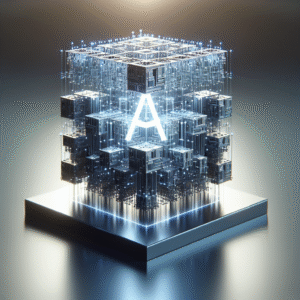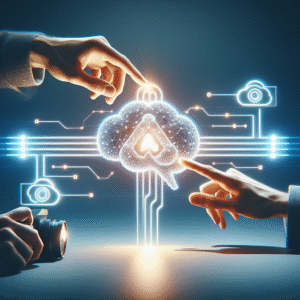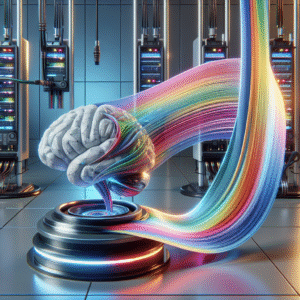Have you ever wondered how modern applications manage complex relationships and interconnected data? I’ve often found myself fascinated by this topic, especially when it comes to the power of graph databases in today’s technology landscape. Understanding graph databases can seem daunting at first, but I believe it’s essential for anyone interested in data management and application development.
What is a Graph Database?
At its core, a graph database is designed to represent data in a structure that highlights relationships between entities, which can be immensely beneficial for certain applications. Unlike traditional relational databases, which use tables with rows and columns, graph databases consist of nodes, edges, and properties, allowing for a more flexible representation of interconnected data.
Components of a Graph Database
-
Nodes
- Nodes can be thought of as the entities in a database, such as people, places, or things. Each node can hold properties that describe it. For example, in a social network database, a node might represent a person with properties such as name, age, and location.
-
Edges
- Edges are the connections between nodes and can represent various types of relationships. For instance, in the same social network, an edge could signify that one person “follows” another or is “friends” with them. Edges can also have their own properties, like the time when a friendship was established.
-
Properties
- Properties are key-value pairs associated with nodes or edges that store additional information. This could include details like the number of followers a user has or the date a connection was made.
Comparison with Traditional Databases
Graph databases differ significantly from traditional relational databases. Below is a simple comparison to highlight their strengths and weaknesses:
| Feature | Graph Database | Relational Database |
|---|---|---|
| Structure | Nodes and edges | Tables with rows and columns |
| Relationship handling | Efficient for complex relationships | Joins required |
| Performance | Faster for connected queries | Slower for complex relationships |
| Schema flexibility | Schema-less or dynamic | Fixed schema |
I find this comparison particularly useful because it highlights why graph databases are gaining traction in scenarios where relationships are pivotal.
Why Use Graph Databases?
The advantages of using graph databases extend beyond just the structure itself. They provide significant benefits that make them suitable for modern applications.
Handling Complex and Interconnected Data
I’ve witnessed firsthand how graph databases can efficiently manage complex networks of relationships. In social media applications, relationships between users can be intricate, involving multiple types of interactions. Graph databases excel at traversing these connections quickly, providing relevant results in much less time than a traditional database might need.
Enhanced Query Performance
When I’m working with large datasets involving numerous relationships, I appreciate the speed that graph databases offer. They can process queries involving deep connections almost instantaneously, unlike relational databases, which often need to perform multiple joins.
Flexibility and Scalability
Graph databases are inherently adaptable. I love that as new types of relationships or nodes need to be added, a graph database can accommodate them without requiring significant changes to its structure. This flexibility is crucial in development environments that iterate rapidly.
Real-World Applications
I’ve come to realize that graph databases are not just theoretical constructs; they have real-world applications that can greatly benefit various industries.
Social Networks
In social networking platforms, I’ve seen how graph databases help manage connections between users, facilitating features like friend recommendations and content sharing. The relationships are complex, making the graph data model a natural fit for this type of application.
Recommendation Engines
Another application I find fascinating is in recommendation systems. Graph databases allow organizations to create personalized recommendations based on a user’s interactions and relationships. For instance, in e-commerce, I’ve noticed that product recommendations often consider what similar users have purchased, which a graph database can efficiently manage.
Fraud Detection
In the realm of finance, fraud detection systems rely heavily on identifying unusual patterns. Graph databases can analyze transaction networks to detect anomalies and relationships that are indicative of fraudulent activity.
Knowledge Graphs
Knowledge graphs represent interconnected information across various domains. For example, I’ve seen them used in AI applications to provide contextual information, enhancing search engines’ ability to deliver relevant results.
Popular Graph Database Technologies
When I began to look into graph databases, I realized there were several technologies available, each with its own strengths. Here are a few I commonly encounter:
Neo4j
Neo4j is one of the most popular graph databases and is known for its robust community and wide array of features. I appreciate its native graph storage and efficient query execution using Cypher, which makes it accessible for various practical applications.
Amazon Neptune
Amazon Neptune is a managed graph database service offered by AWS. I find it particularly useful because it supports both property graphs and RDF graphs, making it versatile for different use cases, especially those related to the cloud.
ArangoDB
ArangoDB caught my attention because it supports multiple data models, including graphs, documents, and key/value pairs. This multi-model approach allows for significant flexibility, depending on the needs of an application.
JanusGraph
I learned that JanusGraph is a highly scalable graph database optimized for big data environments. Its ability to integrate with various storage backends makes it a compelling choice for enterprise-level applications.
Challenges of Graph Databases
As much as I appreciate the benefits of graph databases, there are also challenges involved in their implementation that are worth exploring.
Learning Curve
I’ve found that transitioning to a graph database from traditional relational models can be challenging due to the difference in thinking about data. Understanding how to model data can require some training.
Data Migration
If I ever need to migrate existing datasets from relational databases to graph databases, the process can sometimes be cumbersome. Mapping relationships accurately while maintaining performance can be tricky.
Tooling and Ecosystem
Although growing, the tooling and ecosystem for graph databases are not as mature as those for relational databases. Finding compatible tools for tasks like reporting, visualization, and management can sometimes be a challenge.
The Future of Graph Databases
As I look toward the future of technology, I see a bright horizon for graph databases.
Increased Adoption in Various Industries
I’ve noticed that more organizations are beginning to recognize the benefits of graph databases. As companies continue to generate an enormous amount of data, the need to understand complex relationships will likely increase the adoption of graph technology.
Integration with AI and Machine Learning
The intersection of graph databases with AI and machine learning presents a wealth of opportunities. I believe that as these fields continue to evolve, graph databases will play a crucial role in developing smarter algorithms that can analyze relationships better.
Enhanced Tools and Platforms
With the growing popularity of graph databases, I have a feeling that we’ll see a surge in tools and platforms designed to work with graph technologies. This evolution will simplify the adoption process and enable easier integration into existing workflows.
Conclusion
In my journey to understand graph databases, I’ve come to appreciate their vital role in managing interconnected data. The flexibility, speed, and ability to model complex relationships make them ideal for modern applications. While challenges exist, especially regarding migration and learning curves, the future looks promising for this technology.
Whether it’s in social media networks, recommendation engines, or fraud detection, the applications for graph databases seem practically limitless. As I continue to learn and adapt, I’m excited to see how these databases will shape the future of data management and application development. Understanding graph databases is not just beneficial—it’s essential in a data-driven world, and I encourage everyone to consider their power in shaping modern applications.






